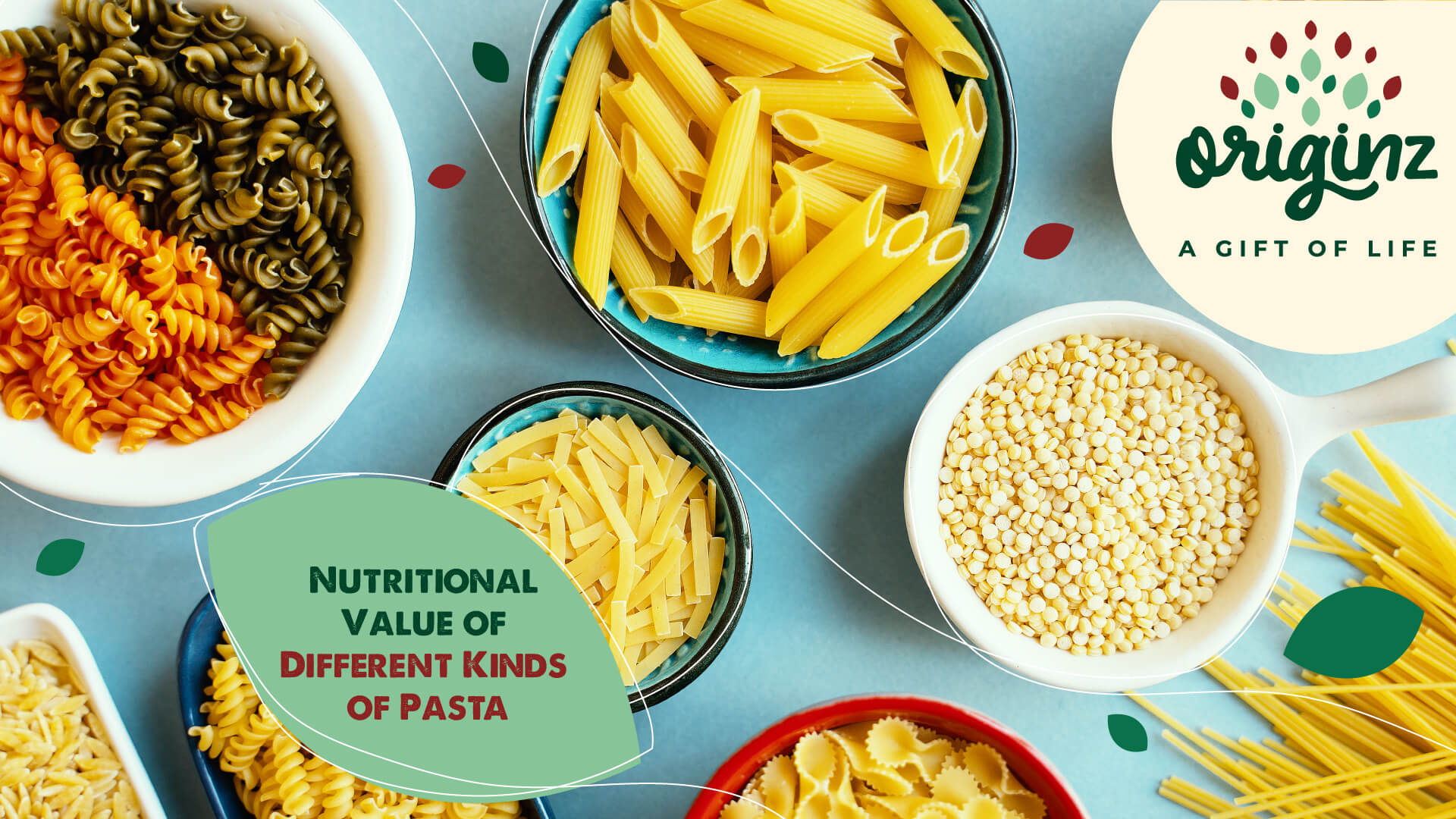
Nutritional Value of Different Kinds of Pasta
From its origins in Italy, pasta has become a staple food in many cultures across the world, from Egyptian vermicelli rice to Thai noodles. Pasta provides a solid carbohydrate base for many dishes and sauces, and it provides many health benefits. Its nutritional value depends largely on the material it is made from – pastas can be made of everything from wheat to chickpeas and corn. This blog will give an overview of the nutritional profiles of the four main kinds of pasta you are likely to see in stores, as well as their associated health benefits.
Regular pasta usually contains around 200 to 220 calories per serving, with about 42-45 grams of carbohydrates and 7-8g protein. Regular enriched pasta is lower in fibre than some of its counterparts, having only around 2-3g. It is very low in fats, only containing about a gram per serving. Some regular pastas may include added vitamins and minerals like folic acid, iron and B-vitamins, which keep your body in shape.
Whole-wheat pasta is similar to regular pasta in many respects, including calorie content, also having around 200-220 per serving. It is a little lower in carbohydrates than regular pasta, with around 40-42g per serving, but makes up for this with its higher protein content of around 8-9g per serving. Whole wheat pasta is known for its much higher fibre content compared to regular pasta – at around 6-7g per serving, wholewheat pasta is sure to help your digestive system work at peak efficiency. It also contains more vitamins and minerals than regular pasta.
Gluten-free pasta, such as rice, corn or quinoa pasta, also sit around the same calorie content as regular pasta, around 200-220 grams per serving. Gluten-free pastas are often higher in carbohydrates than regular pasta by up to five grams, but their protein content can be either higher or lower depending on the grain used, between 2 and 5 grams per serving. The fibre content of gluten-free pasta is often lower than regular pasta, usually having between 1 and 3 grams. The advantages of gluten-free pasta, of course, are that they bring the great taste of Italian cuisine to people with gluten sensitivity.
Finally, bean-based pastas, such as chickpea and lentil pasta, are similar in calorie content but lower in carbohydrates than traditional pasta, only having around 30-35 grams per serving. This can be useful if you are looking to reduce your carbohydrate intake, or are on a low carb or keto diet. Because these sorts of pasta are made from high-protein beans and pulses, they have a far higher protein and fibre content than regular pasta – up to 10 or 15 grams per serving of protein, and 6 to 8 grams of fibre. Bean based pastas are also rich in iron and folate, which keeps blood and muscles healthy.
Whatever kind of pasta you choose for your next meal, you can be sure that it will give you a variety of health benefits. Hopefully, this overview can help you make an informed choice about pasta types and the rewards they can offer. If you’re looking to put this knowledge to use in a pasta dish, check out the recipes on our website!
Further Read,
Latest Blogs

Maintaining Healthy Habits After Ramadan
Have Ramadan healthy meals after Ramadan and maintain healthy food habits and implement them in your daily lives. Read more about healthy food habits.

Authentic Middle Eastern Iftar Meals to Prepare This Ramadan
Prepare some authentic middle eastern iftar meals this Ramadan. Look for fresh Ramadan food ideas and make your day memorable with these dishes. Check them out.

Ramadan Dishes to Cure Fasting Fatigue
Don’t worry about fasting fatigue anymore as we have listed some best Ramadan dishes and easy iftar meals to support your fasting journey. Check them out.

Eid-al-Fitr Feast: Delicious Recipes to Celebrate the End of Ramadan
Celebrate the end of Ramadan with delicious recipes on the eve of Eid ul Fitr. Read more about the traditional Ramadan recipes and make them easily.